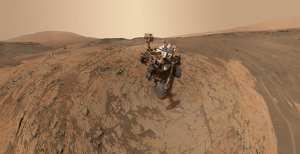NASA invited Sasakawa International Center for Space Architecture (SICSA) faculty members at the UH Cullen College of Engineering to participate in the First Landing Site/Exploration Zone Workshop for Human Missions to the Surface of Mars. The workshop is planned for the last week in October at the Lunar Planetary Institute in Houston.
The purpose of the workshop is to identify and discuss exploration zones on the Martian surface where humans can land, live and work. An exploration zone contains the landing site, habitation site and regions of interest. The regions are located within approximately 100 kilometers of the centralized landing site and are relevant for scientific investigation as well as development and maturation of resources necessary to sustain human life.
NASA’s Human Exploration and Operations Mission Directorate (HEOMD) and Science Mission Directorate (SMD) intend to use the candidate zones as part of the process to plan exploration of Mars with humans. The immediate objectives are to identify locations that maximize potential for scientific discovery and human life support resources, to develop necessary concepts and engineering systems for humans to conduct work in the zones and to define precursor measurements needed in advance of human missions. Robotic spacecraft can gather data from specific Mars surface sites within the zones to support the activities of the directorates.
“It is anticipated that funding and support for future calls will be available for teams of scientists and engineers to conduct detailed characterizations of the zones that emerge from this workshop,” noted Ben Bussey, NASA’s HEOMD chief exploration scientist, and Richard Davis, NASA’s SMD assistant director for science and exploration, in the invitation. “Input from the science and human spaceflight communities is critical to identification of optimal landing sites for future human missions to the surface of Mars.”
